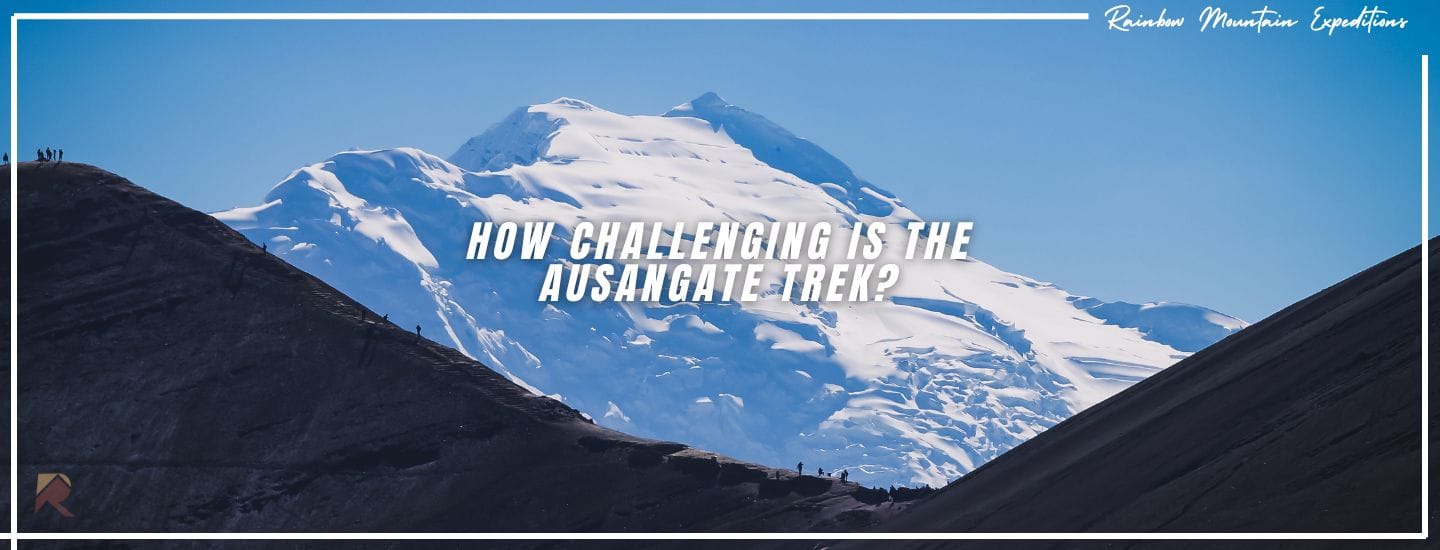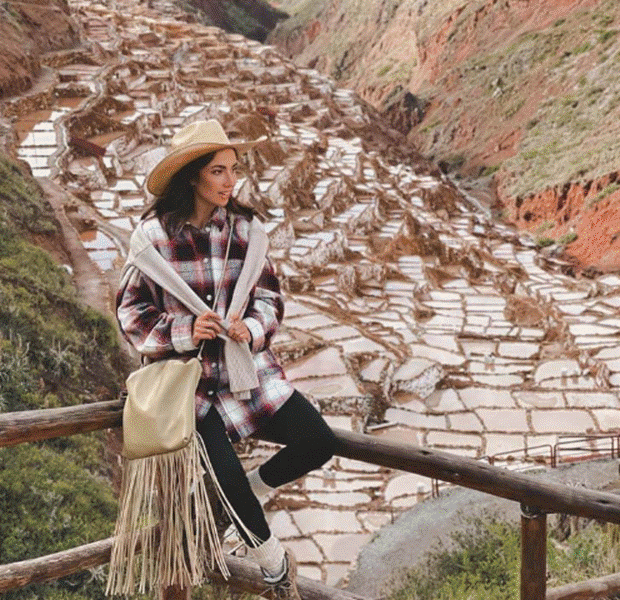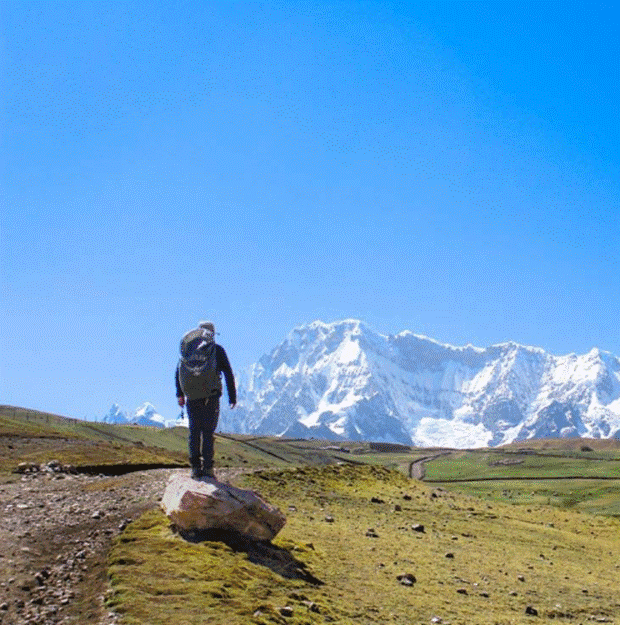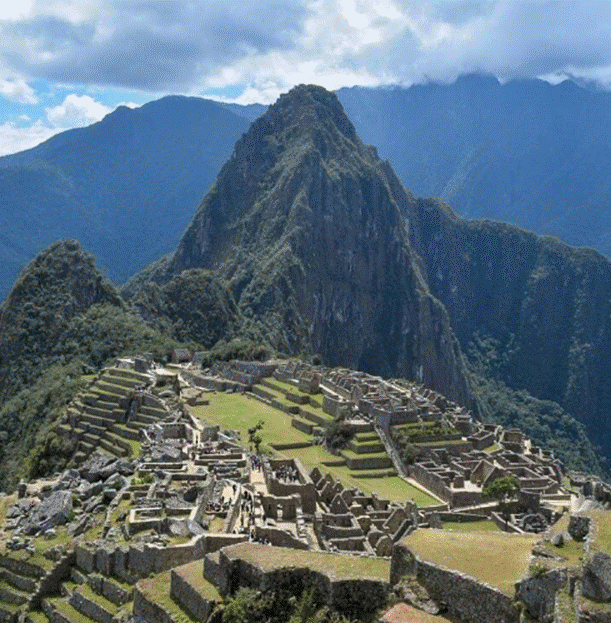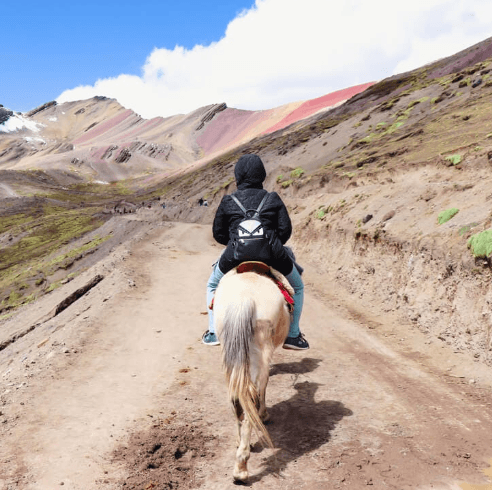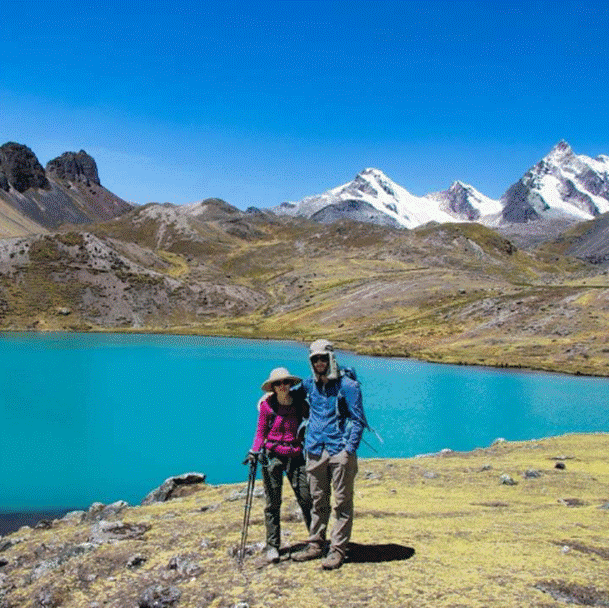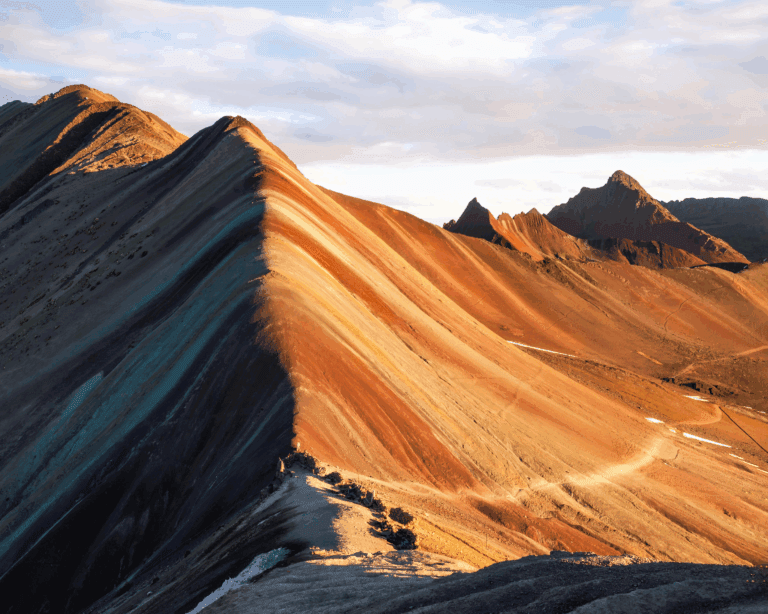Here’s Why the Ausangate Trek Is Considered Challenging
The Ausangate Trek is one of the most demanding yet rewarding hikes in the Andes. Far from conventional tourist routes, this trek presents a true challenge for nature enthusiasts due to its high altitude and other factors that we will discuss further.
1. What is Ausangate?
Ausangate is a sacred mountain for the Andean communities of the Cusco region. Standing at 6,384 meters above sea level, it is the fifth-highest mountain in Peru and is part of the Vilcanota mountain range.
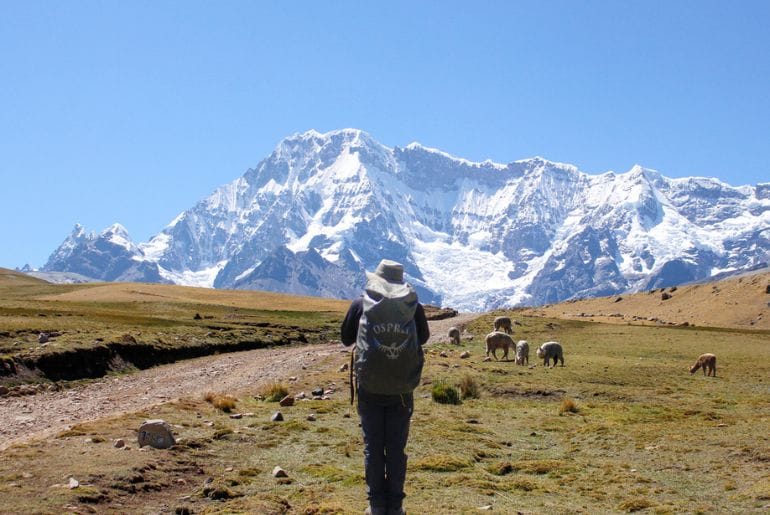
What is an Apu?
In Andean cosmology, an Apu is a protective spirit of the mountains and the life surrounding them. Ausangate is considered one of the most powerful and revered Apus, which is why many local communities view it as a guardian and make offerings in its honor.
Landscapes Surrounding Ausangate
While hiking the Ausangate circuit, trekkers will witness not only the imposing snow-covered mountain but also other incredible landscapes, such as:
- The Seven Lagoons: A set of lagoons with different colors and characteristics, formed by the melting glaciers of Ausangate. There are also lesser-known lagoons surrounding the mountain.
- Snowy Peaks and Glaciers: Besides Ausangate, other sacred mountains such as Mariposa, Qampa and Quelccaya are visible along the route.
- Pacchanta Hot Springs: A natural thermal spring sourced from Ausangate itself, offering a perfect spot to relax and recover during the trek.
2. Location and Altitude of Ausangate
The sacred Ausangate Mountain is located in the Cusco region, within the province of Quispicanchi, at an approximate altitude of 3,800 meters above sea level throughout the trek, hikers will ascend to altitudes exceeding 5,000 meters. with the highest point being the Palomani Pass 5,200 meters above sea level.
3. Why Is It Considered a Challenging Trek?
The Ausangate Trek is one of the most demanding circuits in Cusco, not only because of the distance covered but also due to the extreme conditions that hikers must endure.
Distance of the Ausangate Trek
Unlike other tourist routes, the Ausangate trek is a serious challenge for several reasons, and distance is just one of the factors that make it a demanding adventure. The entire hike typically spans between 60 and 70 km, depending on the chosen route, requiring long walking days and varied terrain.
Extreme Altitude
Most of the trek takes place above 4,000 meters above sea level, with mountain passes exceeding 5,000 meters. The lack of oxygen can cause altitude sickness, making the journey even more challenging.
Varied Terrain
The trail is rugged, with steep ascents and descents. Some sections are rocky, while others are covered in snow, requiring good physical preparation and appropriate gear.
Unpredictable Weather (Depending on the Season)
The weather in this region is highly unpredictable. During the day, there can be intense sunshine, but at night, temperatures can drop to -10°C or lower. In the rainy season (November to March), the trail becomes slippery and more dangerous.
Remote and Isolated Trek
Unlike the Inca Trail or Salkantay Trek, this route is not crowded with tourists. It is a solitary trek, meaning there are few options for resupplying along the way. Hikers must carry all necessary provisions and be well-prepared for any emergencies.
Duration of the Trek
The full Ausangate circuit takes between 4 and 6 days, depending on the pace and planned stops. Spending several days at high altitude, sleeping in tents, and hiking long distances each day adds an extra level of difficulty.
Multiple Access Points for Solo Travelers
There are various entry and exit points for this trek, which can be confusing for independent hikers and, in some cases, even lead to getting lost. The best recommendation is to visit the area with a travel agency that knows the route well.
No Basic Services or Medical Assistance
Throughout the trek, there are no lodges, stores, or medical posts. Everything needed must be carried from the beginning of the journey.
4. Is the Ausangate Trek Worth It?
Absolutely! But only if you have trekking experience or go with an expert guide. This route allows you to witness breathtaking landscapes and explore a less-traveled part of Cusco. Additionally, you’ll gain insight into Andean spirituality and the significance of Ausangate in local traditions.
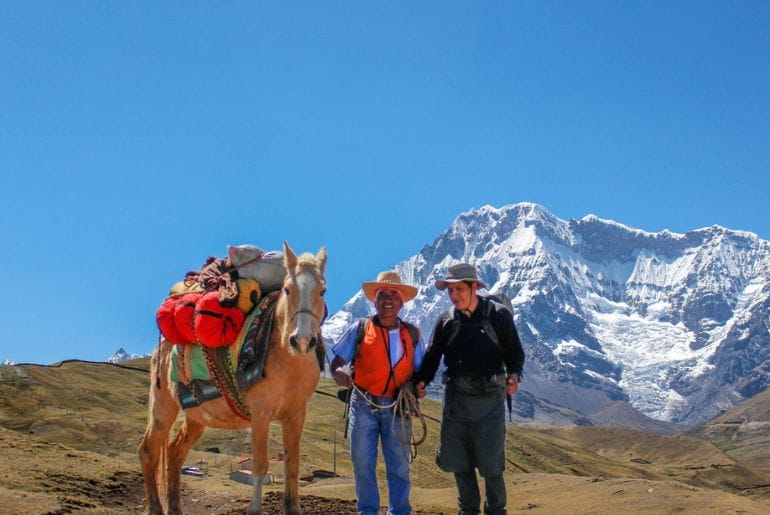
5. How Many Days Does the Trek Take?
There are different trekking options, with the most popular being:
- Short Route (2–3 days): Ideal for those wanting to visit the 7 Lagoons and some scenic viewpoints.
- Classic Route (5 days): The full circuit around Ausangate, including mountain passes and camping in nature.
- Extended Route (6–7 days): Combines the Ausangate Trek with the Rainbow Mountain, adding even more stunning landscapes to the itinerary.
6. Connection Between Ausangate and Salkantay Trek
In Andean tradition and cosmovision, Ausangate and Salkantay are considered sacred mountains (Apus), like spiritual brothers. However, when comparing their treks, Salkantay is more popular and offers more amenities, while Ausangate is more remote and physically demanding.
7. Cost of the Treks
The cost of the Ausangate Trek varies based on duration and included services:
- 2-day tour: Approximately $100 – $180 USD
- 5-day tour: Approximately $250 – $500 USD, depending on whether it includes horsemen, meals, and transportation
- 6-day tour (with Rainbow Mountain): Starting at $400 USD
Conclusión
The Ausangate Trek is one of the most spectacular and challenging routes in the Andes. It is not suitable for beginners, but if you’re willing to take on the challenge, it rewards you with unforgettable landscapes and a unique connection to nature and Andean culture. Before exploring on this adventure, make sure to be well-prepared, acclimate properly, and consider booking a tour to enhance your experience and ensure safety.
Frequently Asked Questions About the Ausangate Trek
If you have more questions or doubts about this trek, check out the frequently asked questions we’ve prepared for you:
Do I Need Trekking Experience to Do the Ausangate Trek?
Yes, this trek is considered difficult, so previous experience in multi-day hikes at high altitudes is recommended. If you’re a beginner, it’s best to start with easier routes before attempting Ausangate.
What Is the Best Time to Do the Ausangate Trek?
The best time is from May to September, when the weather is drier and there is less rainfall. From November to March, the rainy season can make the trail more challenging and dangerous.
Is It Mandatory to Go with a Guide, or Can I Do It on My Own?
It’s not mandatory, but it is highly recommended. The trek is remote and has no phone signal, so going with a local guide can make the experience much safer.
How Can I Physically Prepare for the Trek?
It’s recommended to train at least a week in advance with long-distance hikes on elevated terrain. Additionally, acclimatizing in Cusco for at least 2–3 days before starting the trek is essential.
Where Do You Sleep During the Trek?
You will sleep in campsites along the route. Some tour agencies offer domes or well-equipped tents, but if you’re trekking independently, you’ll need to carry all your camping gear.
Is There an Option to Rent Horses Along the Route?
Yes, in certain sections of the trek, local villagers offer horse rentals for those who need assistance carrying their backpacks or are unable to continue walking.
Is Altitude Sickness a Concern on This Trek?
Absolutely. A significant portion of the Ausangate Trek takes place above 4,000 meters (13,100 feet) above sea level, with some passes exceeding 5,000 meters (16,400 feet). Proper acclimatization, staying hydrated, and avoiding strenuous activity in the first few days are crucial to minimizing altitude sickness symptoms.
What Kind of Food is Available During the Trek?
If you go with a tour operator, meals typically include energy-rich dishes such as hot soups, quinoa, rice, vegetables, and meat. If you’re trekking independently, it’s essential to carry lightweight, easy-to-prepare food that provides enough nutrients for long hiking days.
Does the Ausangate Trek Include Rainbow Mountain?
It depends on the tour package you choose. Some itineraries include a detour to Rainbow Mountain on the last day, while others focus solely on the Ausangate circuit.
Is a Special Permit Required for the Ausangate Trek?
Unlike the Inca Trail, the Ausangate Trek does not require a special permit. However, there is an entrance fee, which varies depending on the specific route and the communities you pass through.
Is This Trek Suitable for Children or Older Adults?
Due to its high altitude and level of difficulty, this trek is not recommended for young children or older adults who do not have experience with high-altitude trekking.
Is the Effort of the Ausangate Trek Worth It?
Without a doubt! If you’re passionate about adventure, breathtaking landscapes, and experiencing nature in its purest form, this trek will offer you an unforgettable experience. The remoteness and rugged beauty of the Andes make it a unique journey for seasoned trekkers.
What Is the Difference Between the Salkantay Trek and the Ausangate Trek?
The main difference is that the Salkantay Trek is an alternative route to Machu Picchu, whereas the Ausangate Trek is an isolated adventure focusing on Andean landscapes and cultural immersion, with no connection to Machu Picchu.
Additionally, the Salkantay Trek passes through diverse ecosystems, transitioning from snowy peaks to cloud forests, while the Ausangate Trek remains in the high-altitude Andean plateau, featuring glaciers, turquoise lakes, and colorful rock formations. In terms of difficulty, Ausangate is more challenging due to its extreme altitude and remote setting.
Can You Swim in the Lakes of Ausangate?
Swimming in the lakes of Ausangate is highly discouraged. These glacial-fed lakes are incredibly cold, and submerging in them can lead to hypothermia within minutes. Additionally, many of these lakes hold spiritual significance for local communities, so entering them could be seen as disrespectful.
The best way to enjoy these lakes is by admiring them from the shore and capturing their beauty through photography.
Related posts:
Ausangate Hike: Health Benefits of Hiking Up
Trekking Trip: Complete Packing List for an Overnight Hike
The Apus: The Spirits of The Mountains and Their Significance
Tip for High-Altitude in Cusco: Preparation for Trekking
Ausangate Trek – Acclimatization and Key Tips for Trekking
The Best Time to Visit Cusco, Peru
Legends and Myths of the Origin of the Inca Empire

